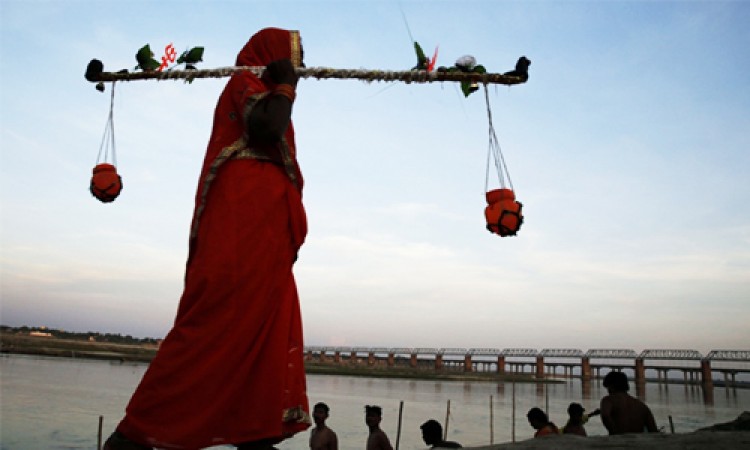
Kawad Yatra is an age-old Hindu pilgrimage and ritualistic tradition that involves devotees undertaking a sacred journey on foot to fetch the holy water of Ganga River. This annual pilgrimage of devotees of Shiva known as Kavarias or Bhole then take this holy water to nearby temple and present it to Lord Shiva. They carry holy water on their shoulder (kandha) which is why it refers to Kawar. This annual pilgrimage is deeply rooted in devotion and faith and holds immense significance for millions of believers across India. The yatra is marked by a vibrant display of spirituality, religious rituals, and a profound sense of camaraderie among the participants.
ALSO READ - OBJECTS POSSESSED BY LORD SHIVA
The origins of the Kawad Yatra can be traced back to Hindu mythology and ancient Indian scriptures. According to legend, during the churning of the cosmic ocean, known as Samudra Manthan, both the gods and demons were in search of immortality. As they churned the ocean using Mount Mandara as the churning rod and the serpent Vasuki as the rope, a poison called "halahala" emerged, threatening to destroy the universe. To save creation, Lord Shiva consumed the poison but held it in his throat, which turned blue. This incident earned him the name "Neelkantha," meaning the blue-throated one.
ALSO READ - From sleeping to awakening of the divine
In gratitude for Lord Shiva's sacrifice, the deities decided to offer the divine nectar, known as amrit, to him. They chose the Ganges River as the source of this holy water. To acquire the Ganges water, devotees began undertaking pilgrimages to the river's source in the Himalayas. Over time, the journey transformed into the Kawad Yatra we witness today. Few other stories are as Lord Shree Ram was the first Kavariya who carried holy water on his shoulders and presented it to Lord Shiva in Baidyanath temple. And others believe that Ravan was the first Kavariyan and presented water to Pura Mahadev in UP.
The Kawad Yatra is traditionally undertaken during the Hindu month of Shravan, which usually falls in July or August. Devotees, known as kawadiyas, embark on foot from their hometowns to the sacred shrines of Lord Shiva, such as Haridwar, Gangotri, or Sultanganj, where the Ganges water is collected.

The yatra is characterized by the devotees' unique appearance, as they carry wooden or metal structures known as kawads on their shoulders. These kawads are decorated with colorful flowers, leaves, and bells. The kawadiyas observe strict austerity during the pilgrimage, following a vegetarian diet, observing celibacy, and practicing various forms of penance and self-discipline.
The devotees chant hymns, sing devotional songs, and loudly proclaim the name of Lord Shiva throughout the journey. They walk long distances, enduring physical hardships, often barefoot, with the firm belief that their devotion and sacrifice will earn them divine blessings. The yatra culminates with the kawadiyas returning to their hometowns and offering the holy Ganges water to the local Shiva temples.
For the participants of the Kawad Yatra, the journey symbolizes surrender, selflessness, and the quest for spiritual enlightenment. It is a demonstration of devotion, faith, and the desire to purify oneself. The physical challenges encountered during the pilgrimage are seen as tests of endurance and determination, which strengthen the devotees' resolve and deepen their spiritual connection.
ALSO READ - Mystical Manifestations: Exploring the Avatars of Lord Shiva
There are four types of kawad which are-
The yatra is also an occasion for the kawadiyas to seek blessings, guidance, and protection from Lord Shiva. The act of carrying the kawads on their shoulders represents the burden of their sins and worldly attachments, which they willingly offer to the divine. By immersing themselves in the journey, the devotees seek to transcend their limitations and attain spiritual liberation.